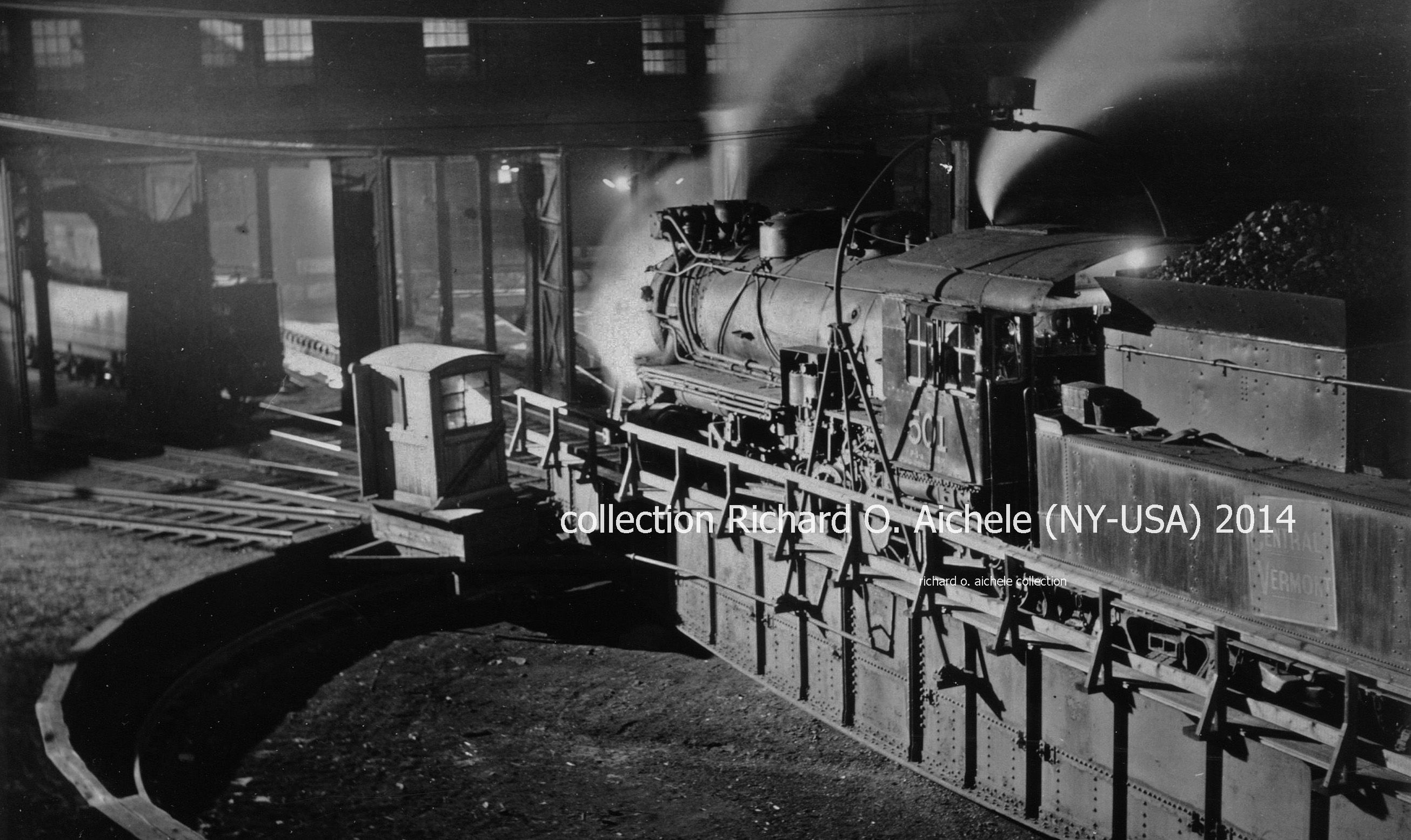The Railroad Steam Era Machines - Infrastructure - People The railroad steam locomotives were called Mikado, Mountain, Berkshire, Niagara, Hudson or Mogul depending on their mechanical wheel arrangement designs. They came in many sizes and they were all impressive. Their smells of coal smoke, steam and hot oil co-mingled and their melodious steam whistles echoed for miles across the countryside. Whether they pulled fast passenger trains, passenger and frieght locals of only a few cars, or long freight trains, those big impressive steam locomotives created wonderful, never to be forgotten memories for millions of people. |
Second to none were the steam locomotives of the New York Central Railroad System that powered the railroad's fleets of freight trains and passenger trains including the famous 20th Century Limited.
|
The Lackawanna Cut-Off - A Fast Track Westward |
Steam passenger trains were at their finest on the Delaware, Lackawanna & Western Railroad's high speed Cut-Off that provided a straight 70 MPH line route with almost no grades across much of western New Jersey plus the fine trackage west into Pennsylvannia. The Cut-Off's western end was at the Delaware Water Gap where the railroad crossed the Delaware River between New Jersey and Pennsylvania on this historic 1,452 foot long multi-span concrete bridge. The Cut-Off's high embankments, concrete tunnels and concrete viaducts now over 100 years old and still intact were an engineering marvel when built early in the 1900s. In the early 1900s, the Delaware Lackwanna & Western Railroad was a construction pioneer in the use of re-inforced concrete used to build structures such as the Delaware Water Gap river bridge, the nearby Paulinskill Voaduct, the 2,2375 long sprandrell deck arch Tunkhannock Viaduct further west as well as the stations and switch tower everywhere on the Lackawanna's rail routes. |
Mainline Eastern Steam |
The Daily Race
The tracks of two of America's largest eastern railroads were parallel to each other for only part of the 18 miles between Engelwood ,Illinois and Gary, Indiana. It took only minutes for the New York Central Railroad’s 20th Century Limited and the Pennsylvania Railroad’s Broadway Limited to travel those few miles but it was a daily example that of that era demonstrating corporate technical and operational competition to attract the public travelers. Both were first class all-Pullman car trains that operated daily in both directions between New York City and Chicago. The trains departed from Chicago for New York at the same mid-afternoon time with the 20th Century Limited from Chicago’s LaSalle Street Station and the Broadway Limited from Chicago’s Union Station. Over the years, the daily race was the opportunity to witness the evolutions of the latest steam locomotive and then diesel locomotive technologies combined with industrial era artistic designs. At Engelwood, the two railroad’s mainlines converged and the daily race was a subject for photographers and artists for decades.
(Below)The New York Central's Lake Shore Limited Boston Section (Train 22) with two locomotives about 1951. The Number 600 was the lead steam locomotive of the double header team for the climb over the Berkshire Mountains in western Massachusetts. The photo shows Train Number 22 at the Austerlitz Street crossing just after leaving the train depot in Chatham, New York on schedule in the late morning heading east for the train's late afternoon arrival in Boston. The Lake Shore Limited had originated in Chicago for the overnight run to Abany, NY where the train split into the New York Section enroute to New York City's Grand Central Terminal and the Boston Section enroute to Boston's South Station. (Photo by Gene Baxter) |
The Railroad's Roundhouse Infrastructure |
These photos taken on a winter's night by Gene Baxter about 1950 show the Central Vermont Railroad's steam locomotive number 501 and its tender fully loaded with coal on the turntable prepared for the next day's rail traffic.
|
Delaware Lackawanna Railroad's Binghampton Roundhouse |
The end of railroad operated steam locomotives also brought an end to that unique railroad facility - the Roundhouse. Years after the last steam locomotives moved away from the maintenance pits toward their last trip to the scrappers, this Delaware, Lackawanna & Western RR locomotive roundhouse in Binghampton, New York still remained in 1971 although long abandoned and silent. |
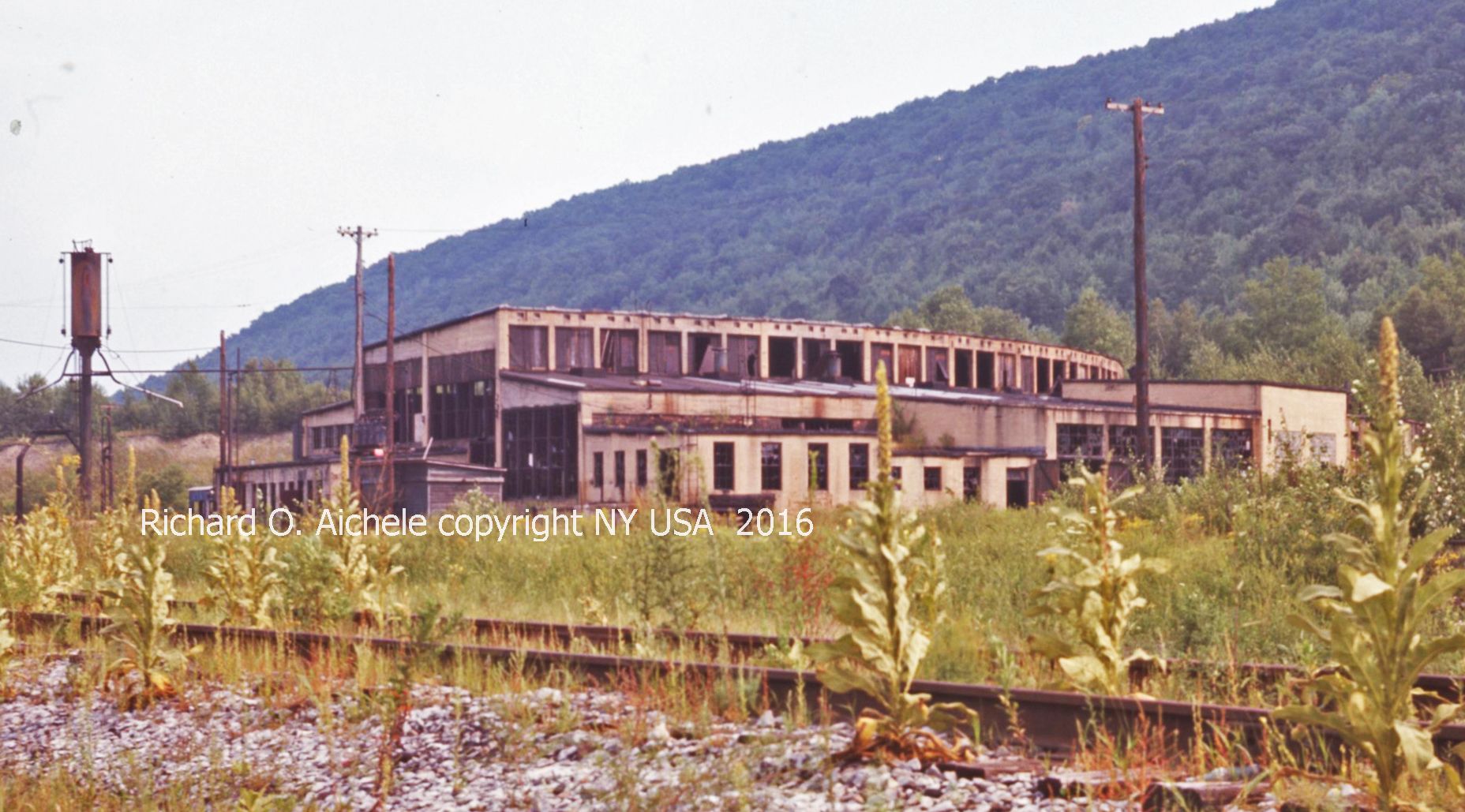 |
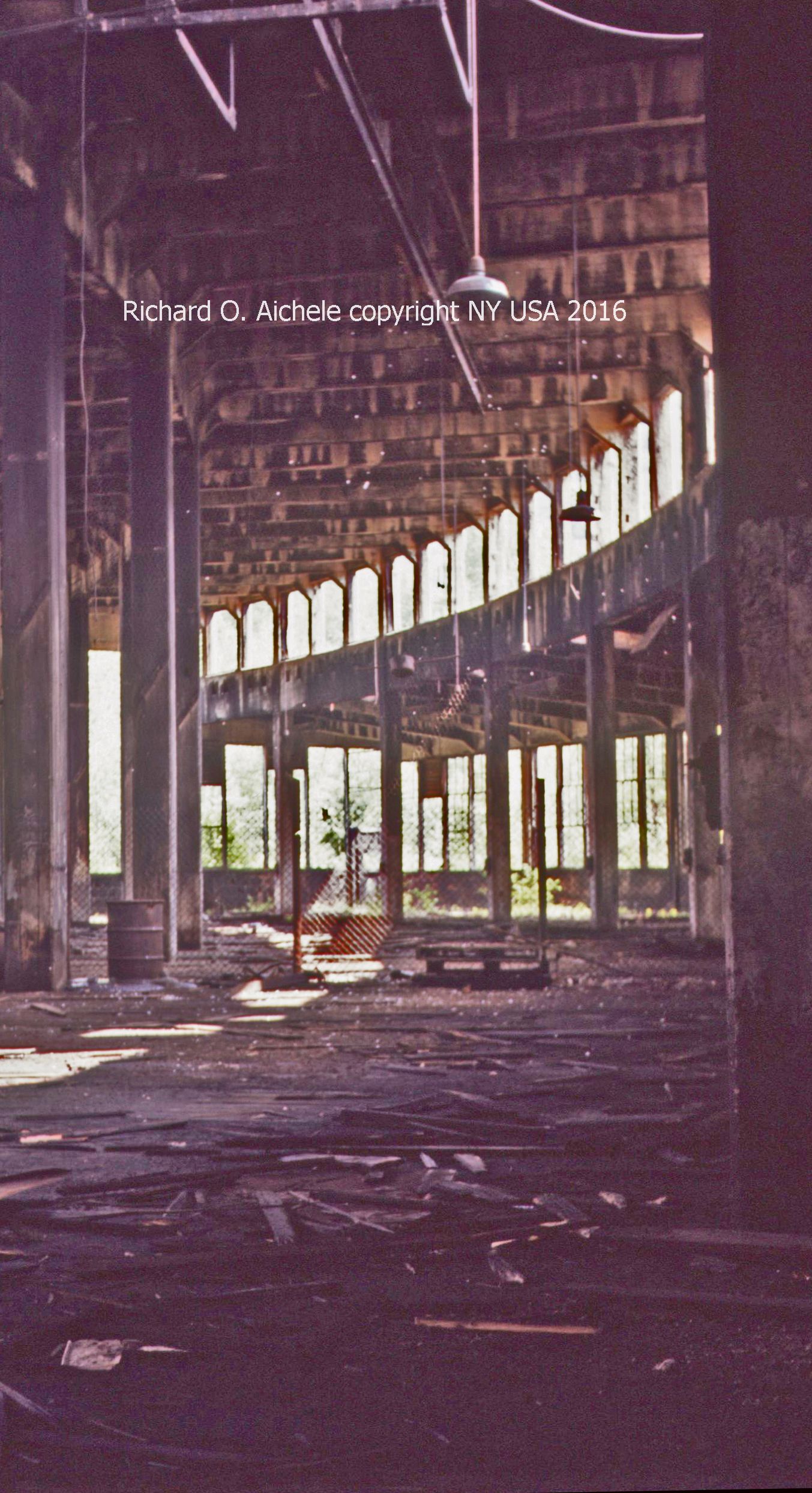 |
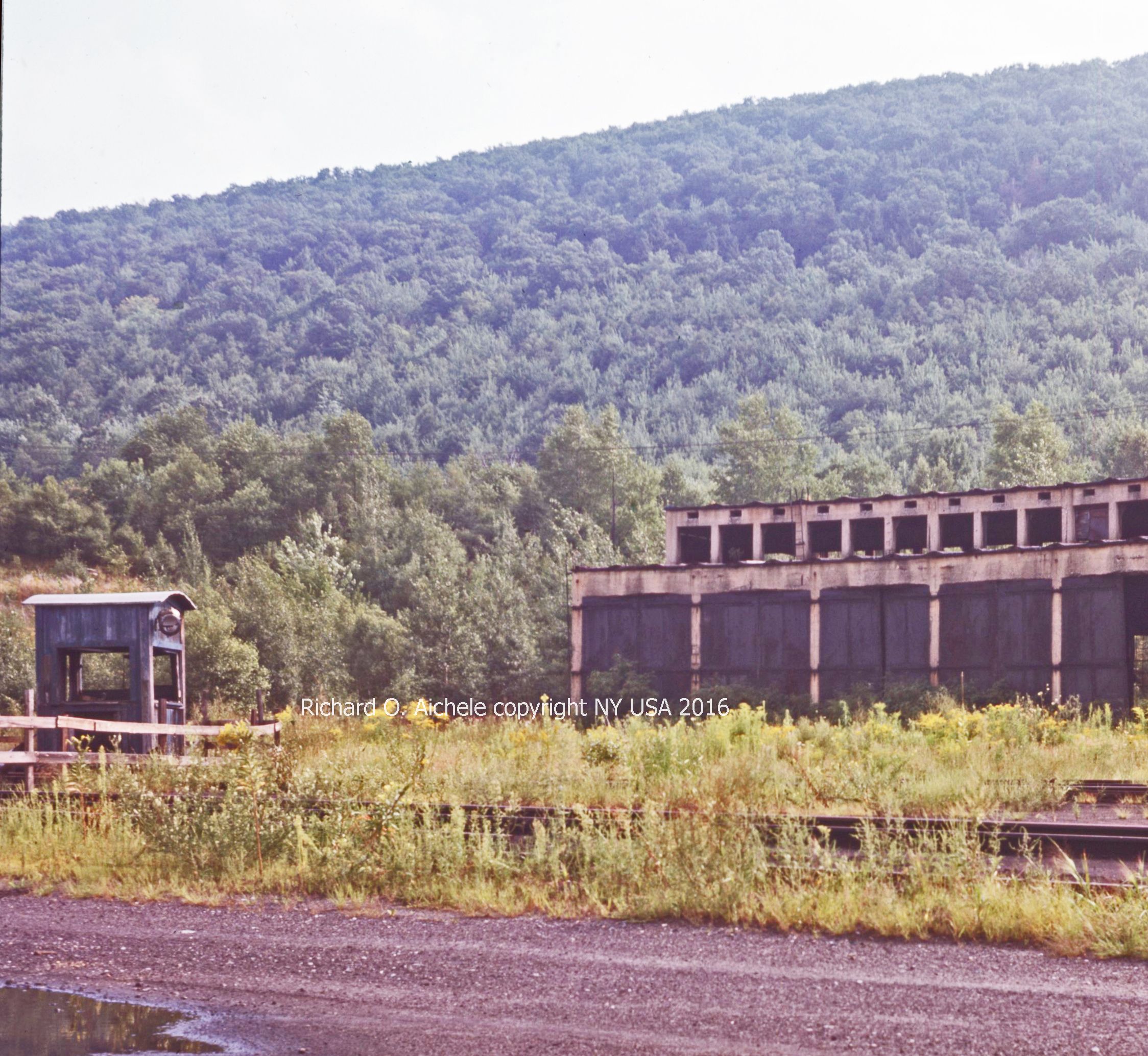 |
Central Railroad of New Jersey's Communipaw Roundhouse |
The Central Railroad Company of New Jersey operated passenger and freight service in New Jersey and eastern Pennsylvania and cross Hudson River commuter ferries from Jersey City, NJ to Manhattan in New York. Their major operational base for their motive power steam locomotives was at the Communipaw Round House in Jersey City. By the late 1960s, the region's declining rail passenger and freight business and the changeover from steam to diesel motive power saw that faciility closed down. In 1970, when these photos were taken, the hundreds of skilled workers were gone and only a few large pieces of machinery to heavy to carry off remained. |
 |
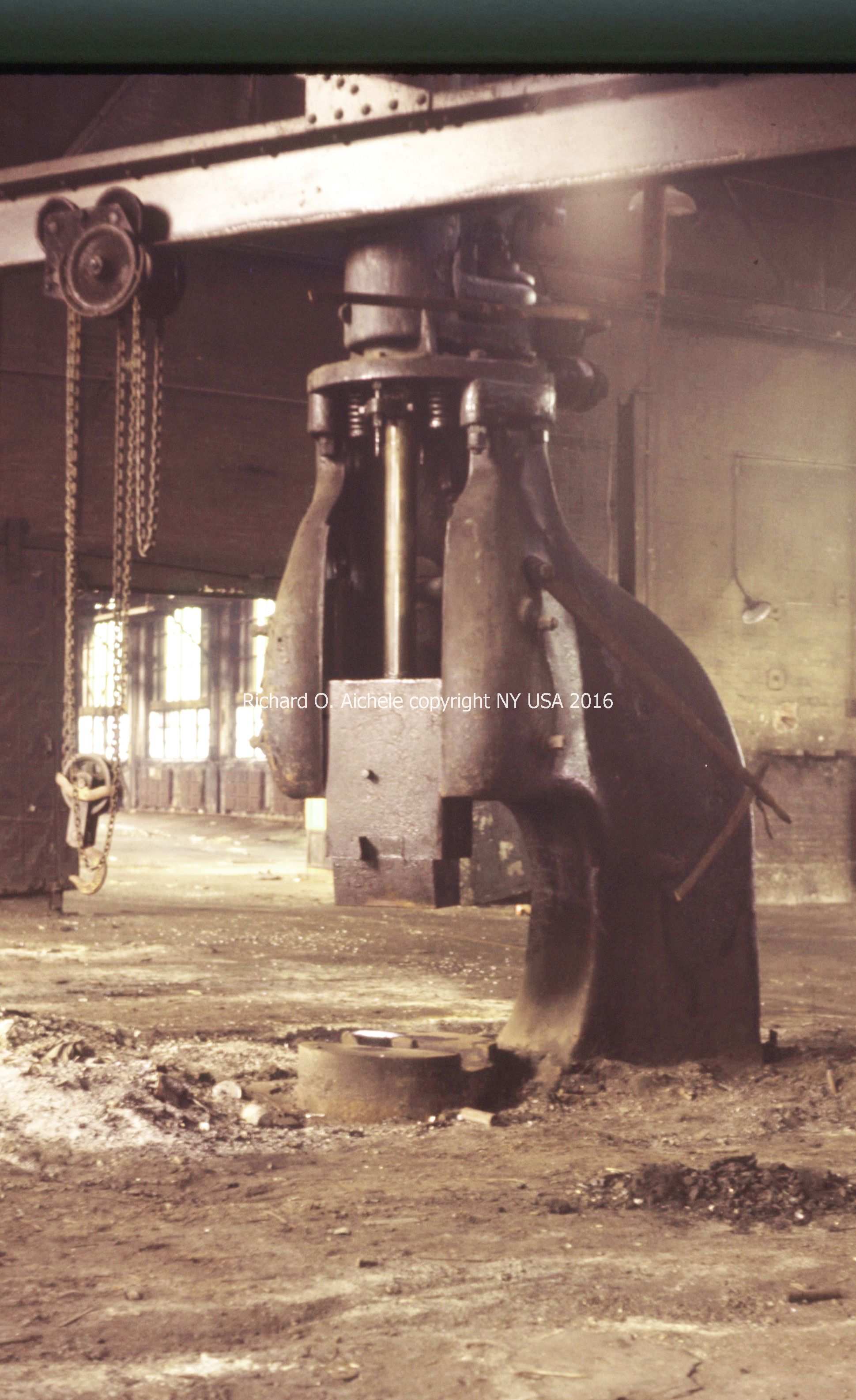 |
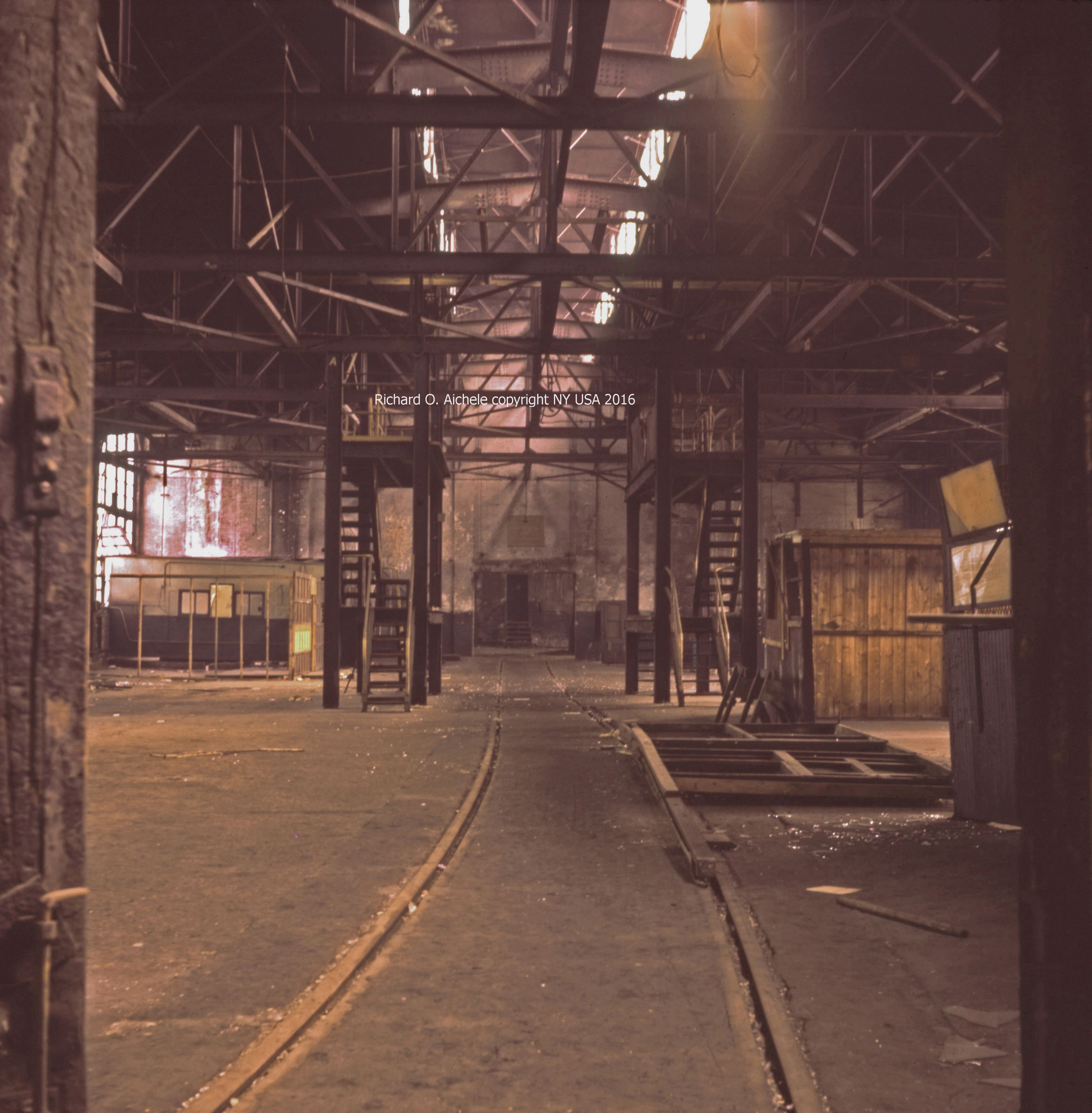 |
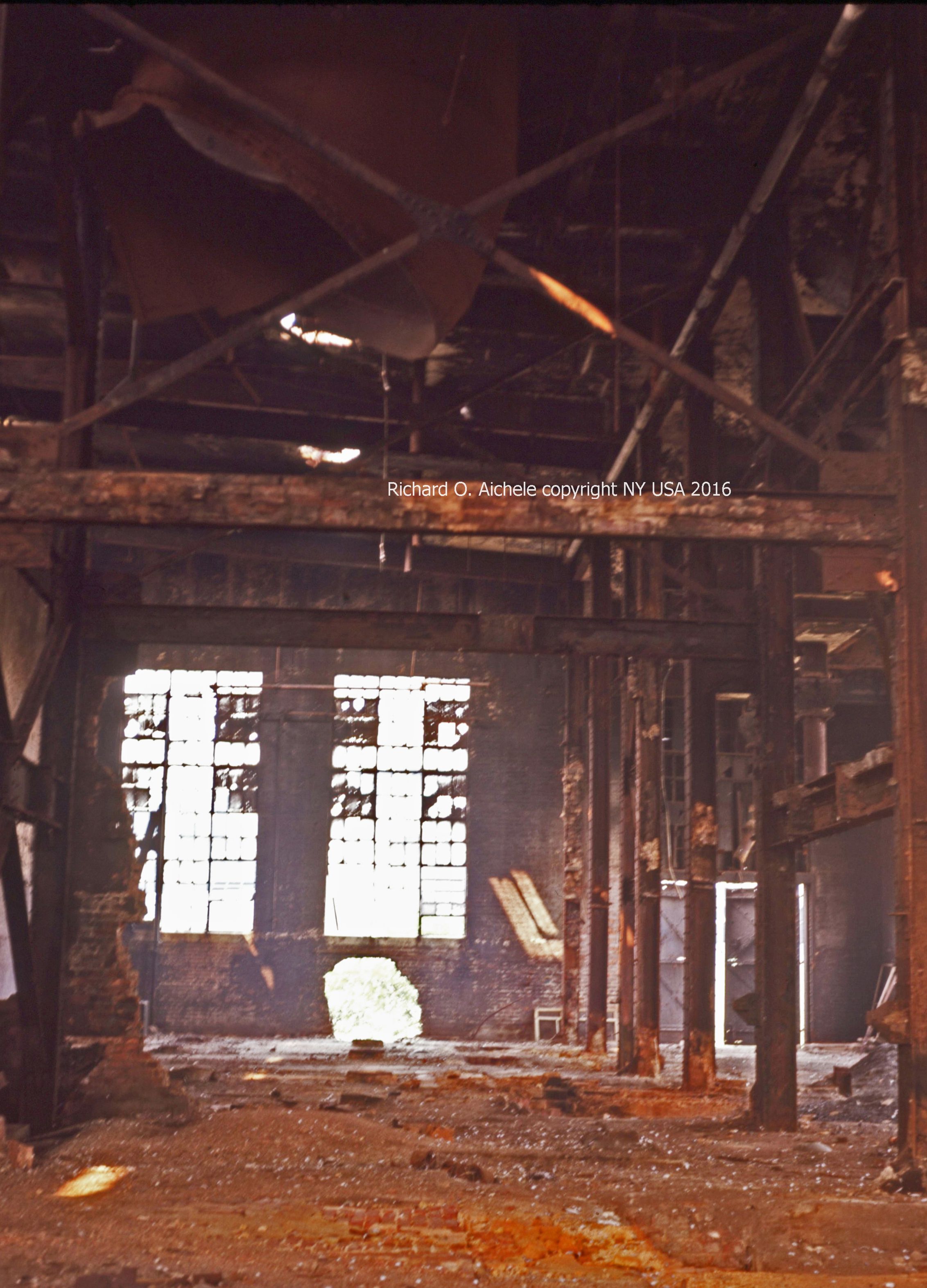 |
Locomotives, Mail Cars, Passenger Cars -- On The Scrap Line After Years of Service |
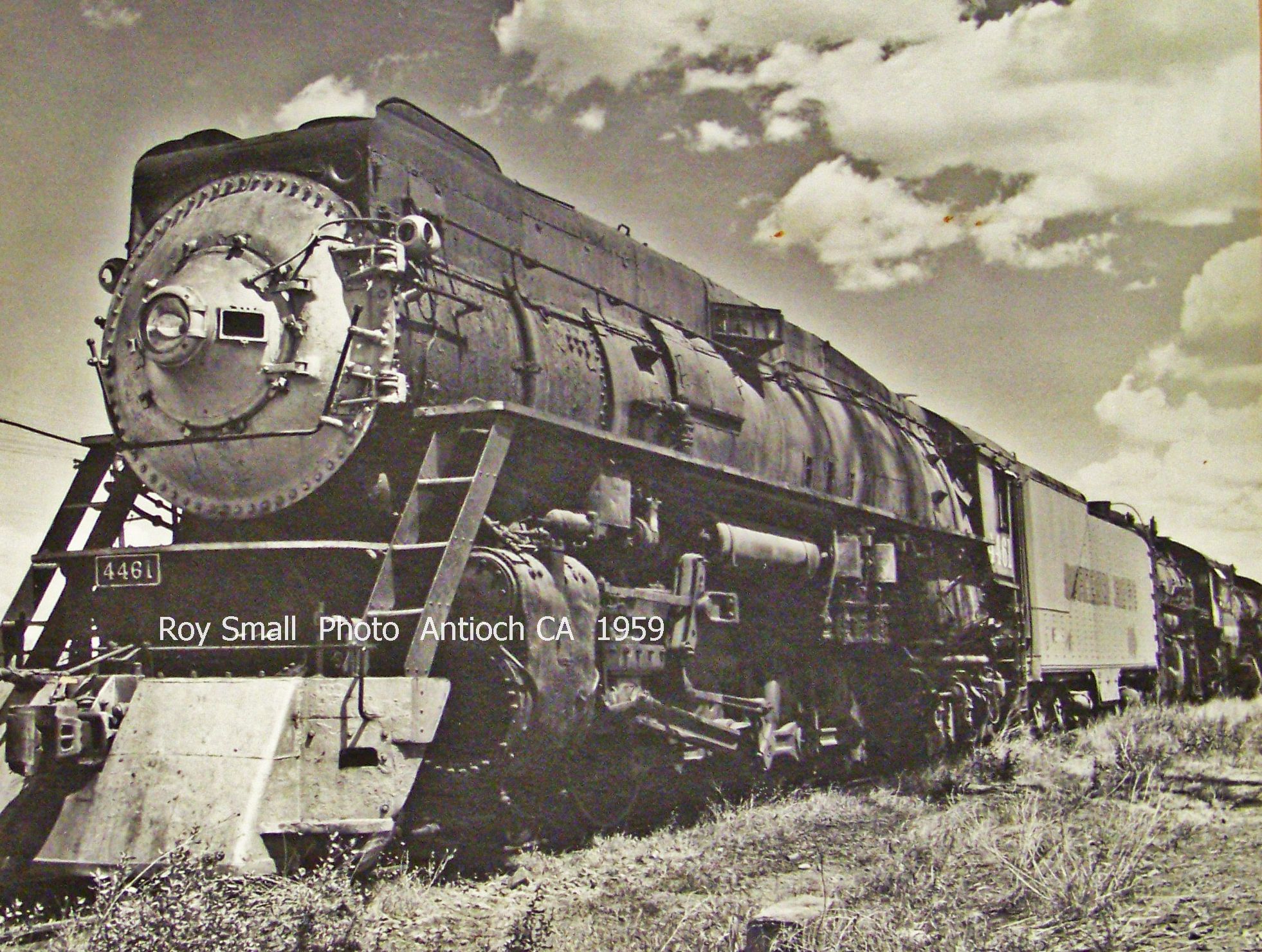 |
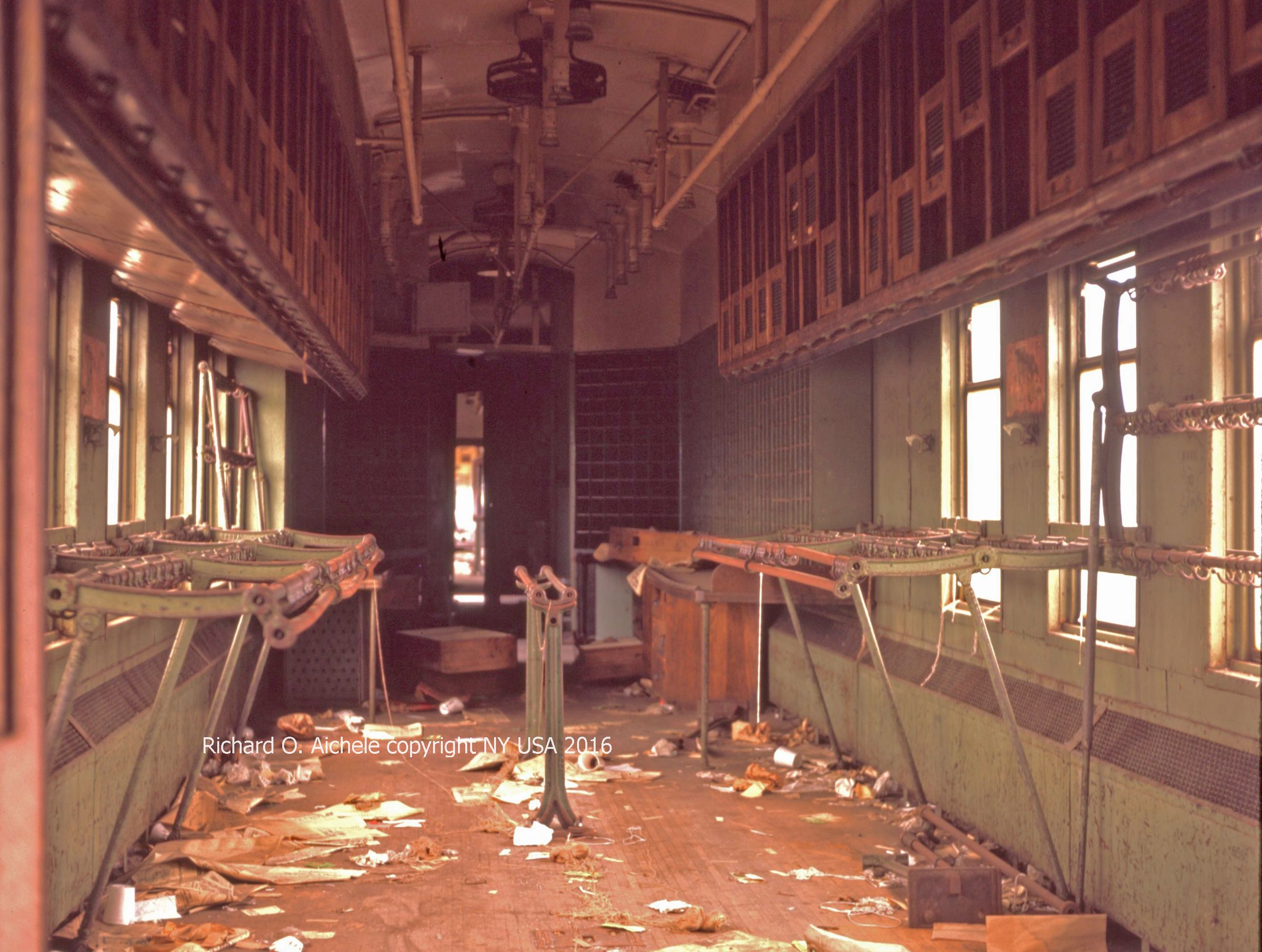 |
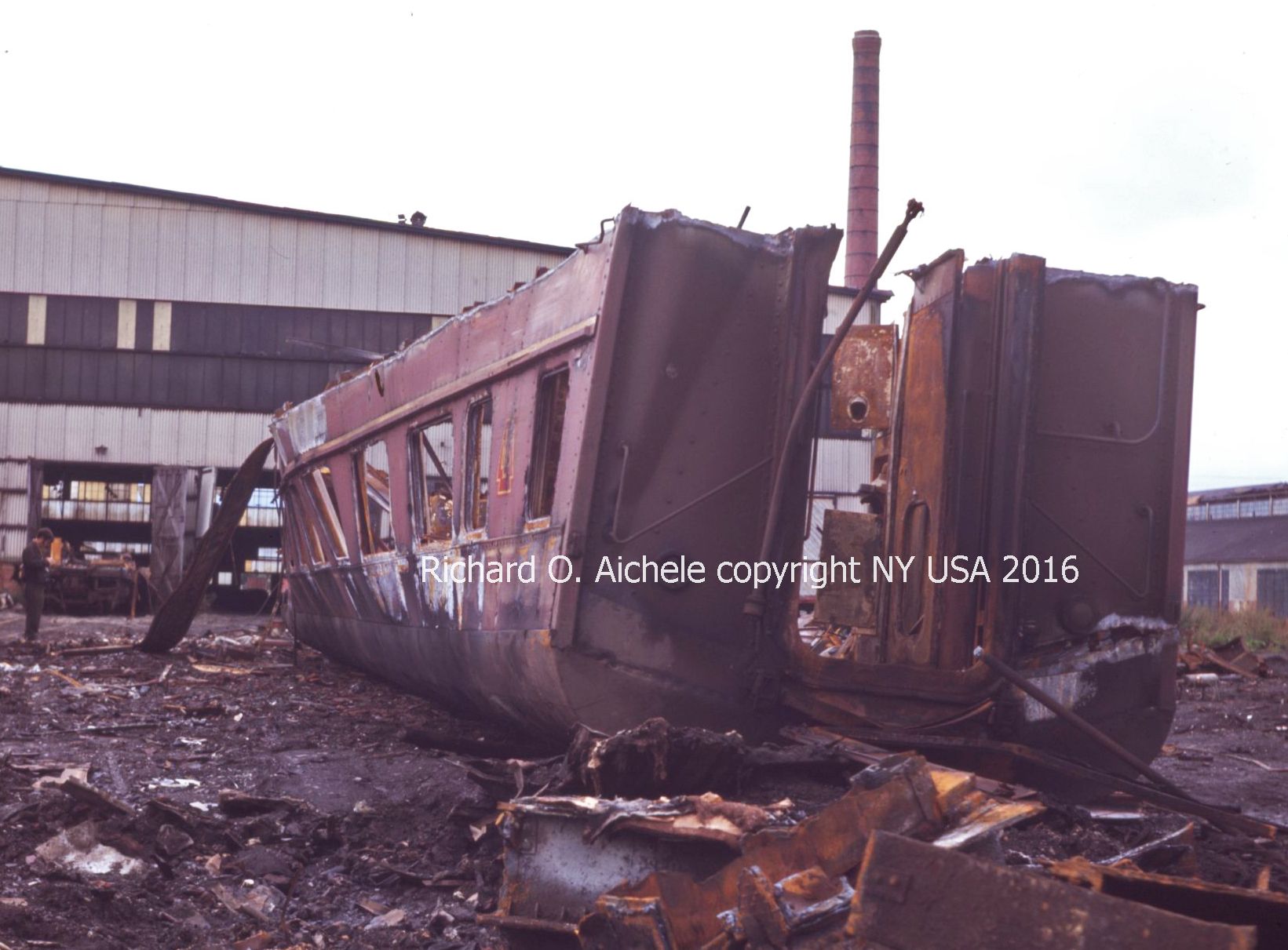 |
Railroad Steam Locomotives Operations |
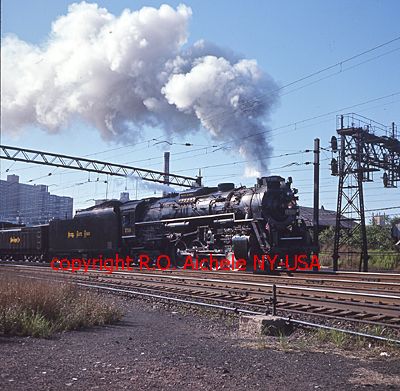 Looking back, in the Northeast, one of the most famous individual operators was the High Iron Company that operated many steam excursions using several locomotives. In this photo, the rebuilt, classic ex-Nickel Plate Railroad's Berkshire 759, powered one of the High Iron Company's finest two day trips that orginated on Day 1 in May 1970 in Hoboken, New Jersey. The train's northwest route followed the old Erie Railroad's mainline through the Catskill Mountains of New York State and then along the upper Delaware River to Binghampton, New York. The Day 2 leg, took the long train south to Scranton, Pennsylvania then east across the old Lackawanna Railroad's mainline through the Delaware Water Gap, across northern New Jersey using the Lackawanna Cut-Off's elevated roadbed at speeds up to 70 MPH for an afternoon arrival at the Lackawanna Railroad's Hoboken Terminal. Looking back, in the Northeast, one of the most famous individual operators was the High Iron Company that operated many steam excursions using several locomotives. In this photo, the rebuilt, classic ex-Nickel Plate Railroad's Berkshire 759, powered one of the High Iron Company's finest two day trips that orginated on Day 1 in May 1970 in Hoboken, New Jersey. The train's northwest route followed the old Erie Railroad's mainline through the Catskill Mountains of New York State and then along the upper Delaware River to Binghampton, New York. The Day 2 leg, took the long train south to Scranton, Pennsylvania then east across the old Lackawanna Railroad's mainline through the Delaware Water Gap, across northern New Jersey using the Lackawanna Cut-Off's elevated roadbed at speeds up to 70 MPH for an afternoon arrival at the Lackawanna Railroad's Hoboken Terminal. |
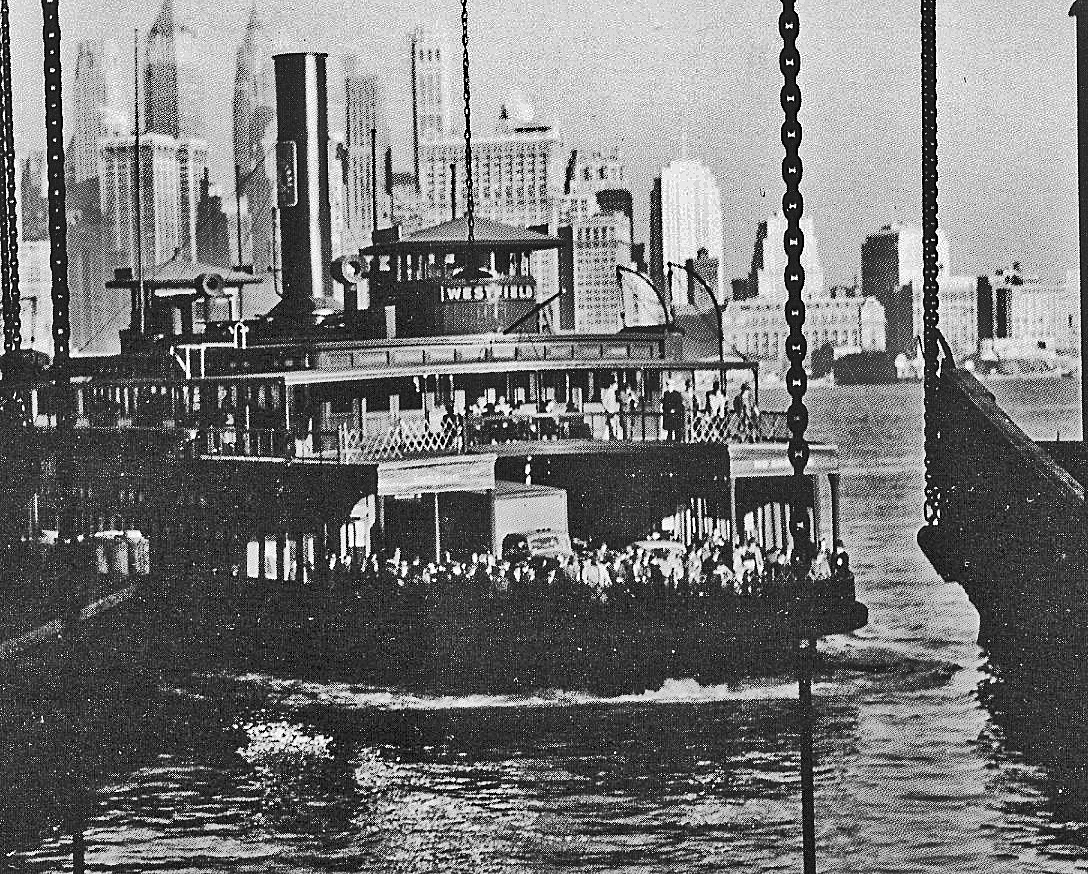 The steam powered railroad ferries - tug boats - and their connecting inland steamboats were once very important parts of railroad history. The ferries serving San Francisco were long popular. Cross Hudson River ferries operated by the Lackawanna, New York Central, Erie and Pennsylvania railroads plus the municipal ferries across lower New York harbor were the areas transportation core and their survivors are still an important link today. The steam powered railroad ferries - tug boats - and their connecting inland steamboats were once very important parts of railroad history. The ferries serving San Francisco were long popular. Cross Hudson River ferries operated by the Lackawanna, New York Central, Erie and Pennsylvania railroads plus the municipal ferries across lower New York harbor were the areas transportation core and their survivors are still an important link today. |
Examples of American classic steam locomotive power still exists in service as mainly as excursion trains operated by several railroads and railroad fan organizations. One source of 2018 steam schedules in the U.S. visit: http://www.railserve.com/events/railfan_excursions.html |
The era of steam railroad locomotives also still survives in Europe for the enjoyment of railroad and steam power enthusiasts riding the special steam trains or watching them pass by. |
According to the creator of the film, T. Sohns of Germany, the steam power was, "Rebuilt in the 1950s by the German Federal Railway (DB), 01 1066 and 41 018 are among the most modern and successful German steam locomotives. Both are equipped with oil burners. Whilst express train locomotive 01 1066 is a 3 cylinder 4-6-2 Pacific cleared for 140 km/h (87 mph), fast freight engine 41 018 is a 2 cylinder 2-8-2 Mikado cleared for 90 km/h (56 mph). On October 21, 2006 at 2:10h pm and 4:48h pm the two engines battled gravity with 12 coaches in tow on the famous 2.5 percent Schiefe Ebene grade (Neuenmarkt - Marktschorgast) North of the town of Bayreuth not far from the German-Czech border. Both runs were recorded from different perspectives at the reverse curves near to kilometer post 80 - this video shows the 2:10h pm run. The tour was organized by IGE Bahntouristik, www.bahntouristik.de." |
Information Works Inc. P.O. Box 4725, Saratoga Springs, NY 12866 USA
Website Copyright 2018. Website author Richard O. Aichele
- - - - - - - - - - -

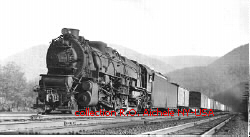 ( Left) Along the mainline route of the Pennsylvania Railroad,
locomotive 6769, a 4-8-2, hauls a westbound merchandise freight along the
Juniata River toward Lewistown, Pennsylvania. It was also the route of the PRR's
famous passenger train fleet including the all first class Broadway
Limited operating overnight between New York City and Chicago.
( Left) Along the mainline route of the Pennsylvania Railroad,
locomotive 6769, a 4-8-2, hauls a westbound merchandise freight along the
Juniata River toward Lewistown, Pennsylvania. It was also the route of the PRR's
famous passenger train fleet including the all first class Broadway
Limited operating overnight between New York City and Chicago.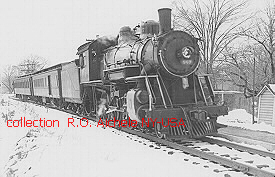 ( Right > ) The Erie Railroad was one of the oldest of the eastern railroads and
had its eastern terminal on New Jersey's Hudson River shoreline in Jersey City.
But from the New Jersey waterfront to the mid-west, scenes such as this Erie
local train serving the smaller cities and towns were common.
( Right > ) The Erie Railroad was one of the oldest of the eastern railroads and
had its eastern terminal on New Jersey's Hudson River shoreline in Jersey City.
But from the New Jersey waterfront to the mid-west, scenes such as this Erie
local train serving the smaller cities and towns were common. 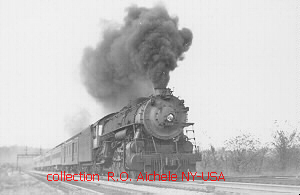 ( Left ) With passengers from the west, the Delaware, Lackawanna
& Western Railroad passenger train New York Express headed by
locomotive #1404 (a 4-8-2) races eastward towards Clarks Summit, PA. Making up
the consist was a sleeping car, parlor car, dining car and coaches. Originating
in Buffalo, NY, the train arrived at the Lackawanna Terminal in Hoboken, NJ in
mid-afternoon.
( Left ) With passengers from the west, the Delaware, Lackawanna
& Western Railroad passenger train New York Express headed by
locomotive #1404 (a 4-8-2) races eastward towards Clarks Summit, PA. Making up
the consist was a sleeping car, parlor car, dining car and coaches. Originating
in Buffalo, NY, the train arrived at the Lackawanna Terminal in Hoboken, NJ in
mid-afternoon. 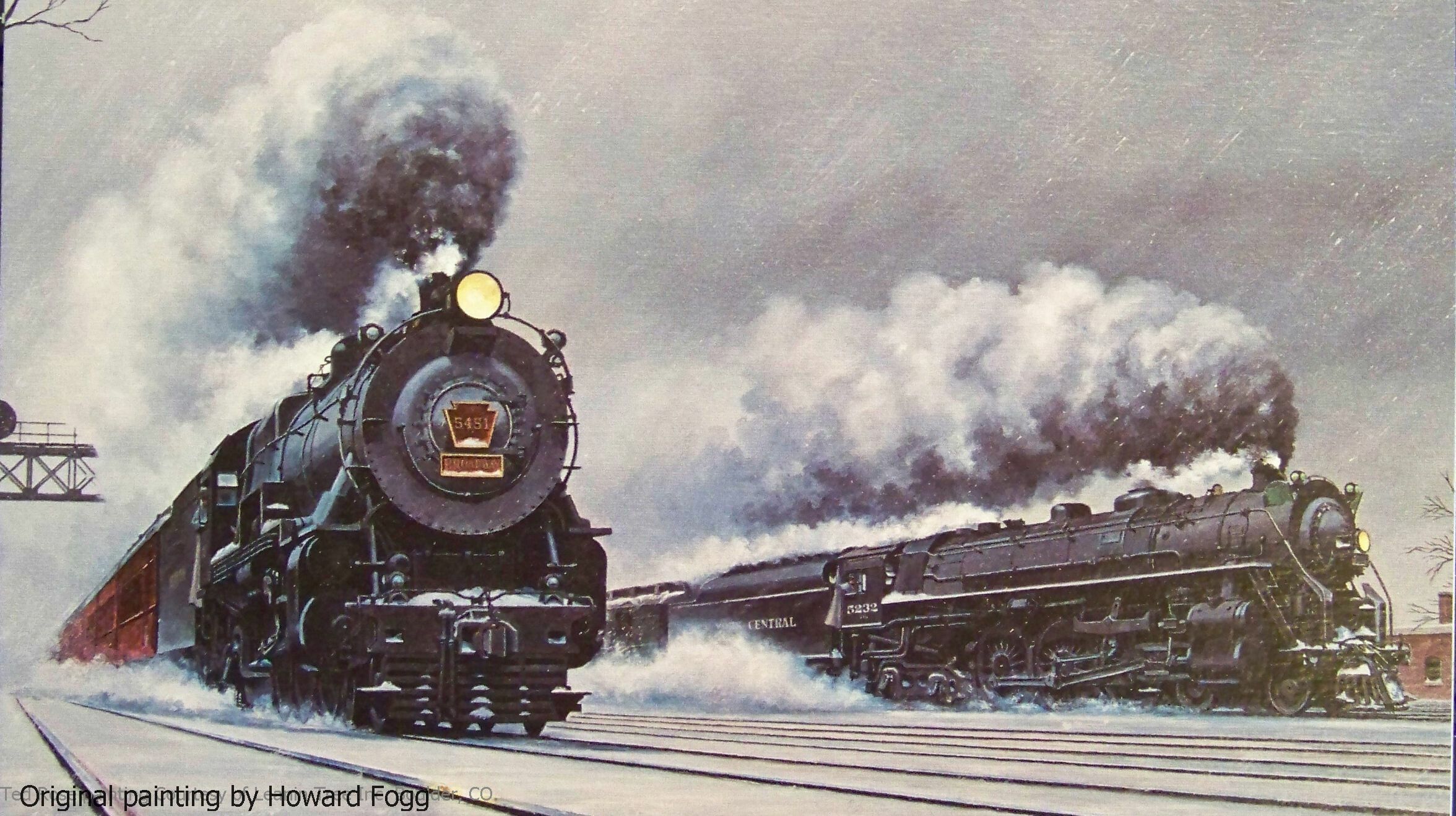
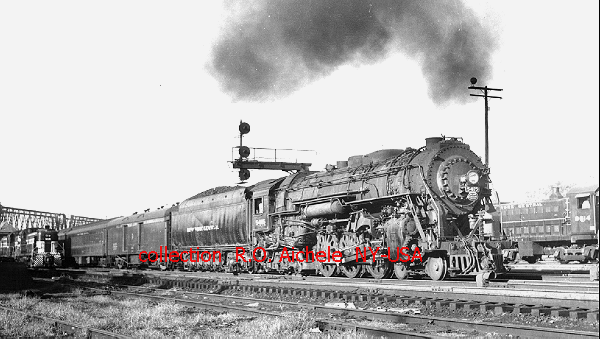 (Left) After its arrival from Montreal over the Delaware & Hudson mainline along Lake Champlain and into Troy, the Laurentian's passenger train consist was transferred to the New York Central Railroad. Headed by NYC locomotive 5415, the Laurentian again rolled southbound for Croton-Harmon, NY where the steam power was replaced by an electric engine for the Laurentian's final leg of the trip to the New York Central Railroad's Grand Central Terminal in New York City. (Photo by Gene Baxter)
(Left) After its arrival from Montreal over the Delaware & Hudson mainline along Lake Champlain and into Troy, the Laurentian's passenger train consist was transferred to the New York Central Railroad. Headed by NYC locomotive 5415, the Laurentian again rolled southbound for Croton-Harmon, NY where the steam power was replaced by an electric engine for the Laurentian's final leg of the trip to the New York Central Railroad's Grand Central Terminal in New York City. (Photo by Gene Baxter)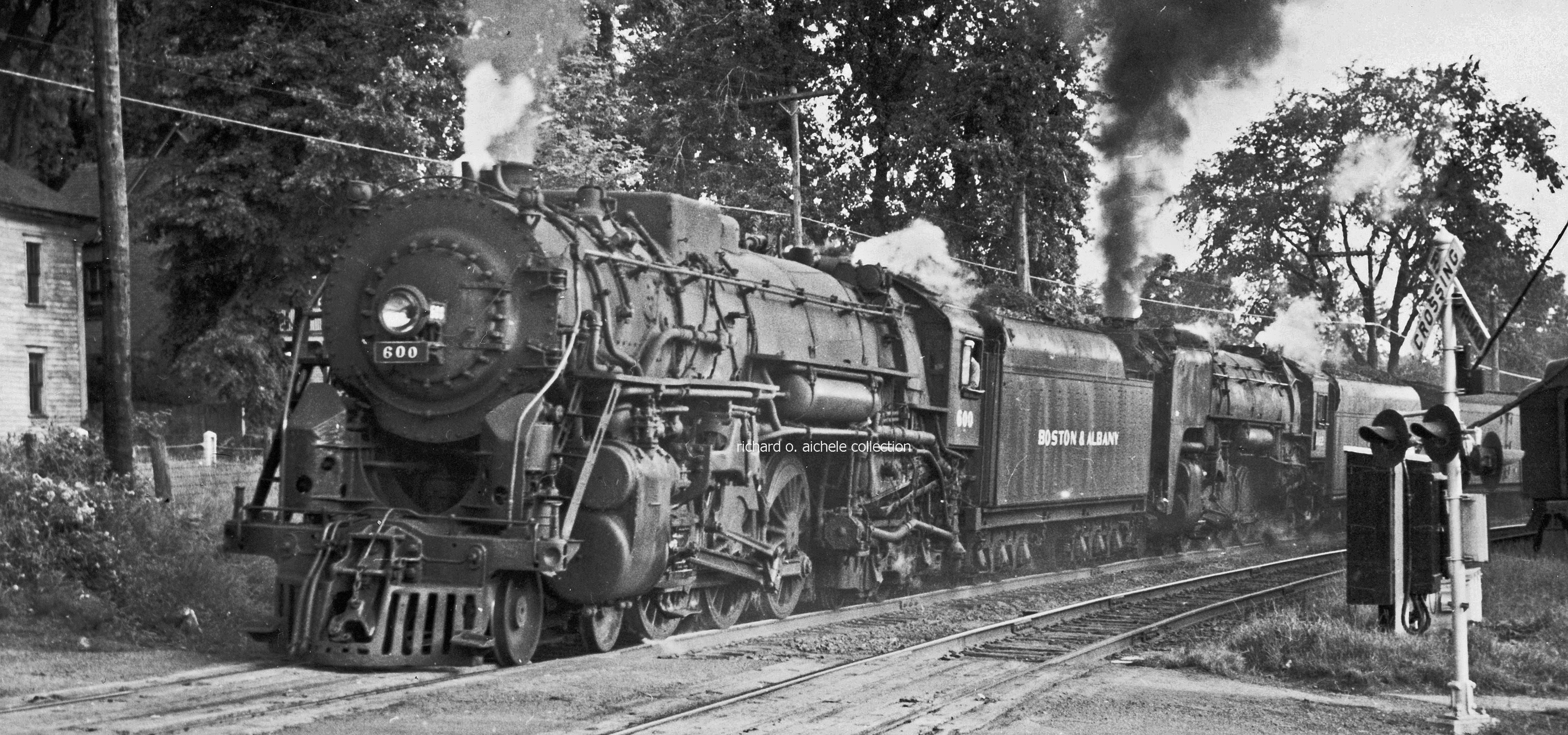
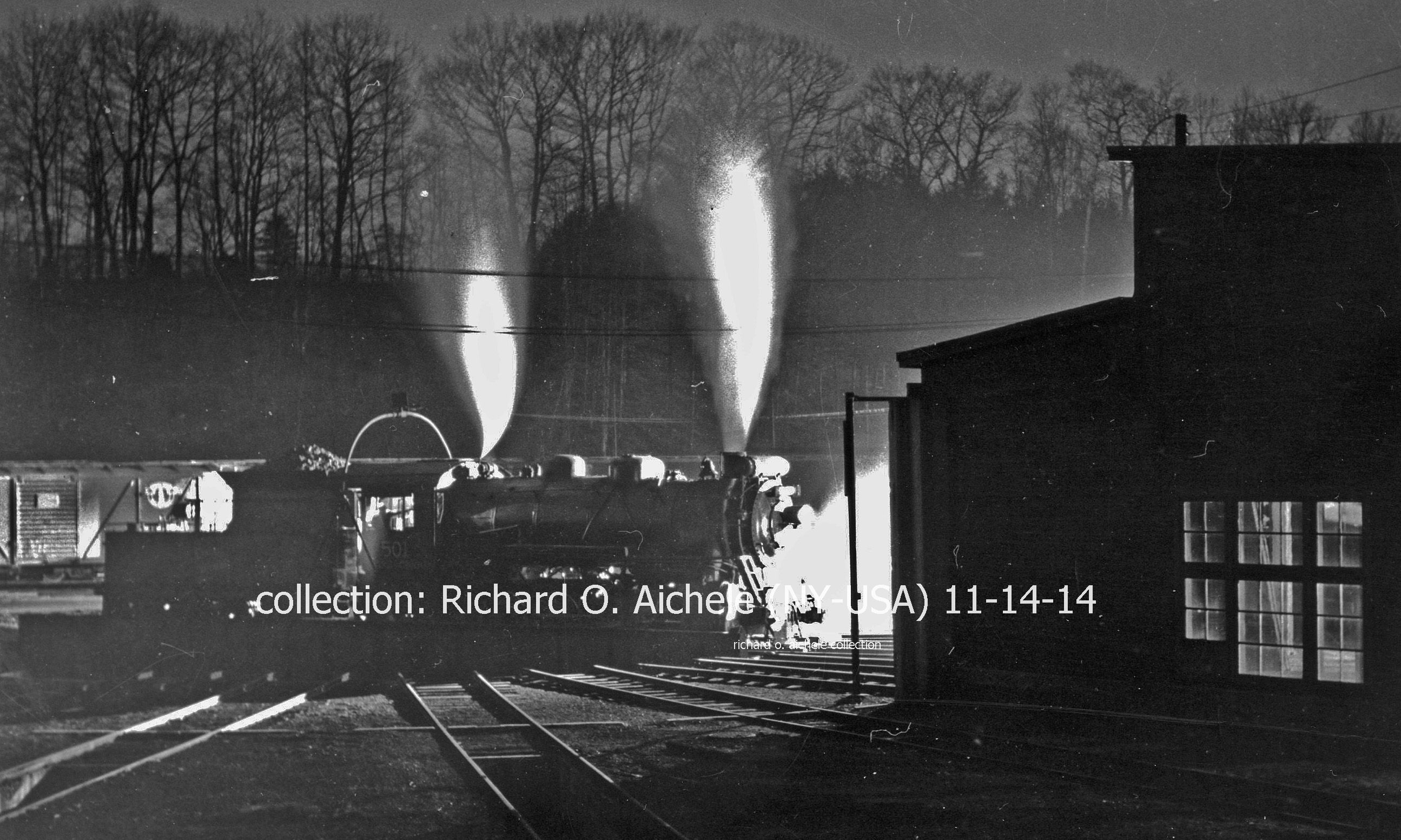 At the heart of railroad steam locomotive operations up until the 1950s was the railroad roundhouse with its turntable to orient steam locomotives into the individual "stalls" or work bays. In Troy, New York, the seven stall roundhouse was built by the Boston and Maine Railroad. It was located at 8th Street and Middleburgh Street north of the Troy Union Station. The structure still survives today as an industrial building.
At the heart of railroad steam locomotive operations up until the 1950s was the railroad roundhouse with its turntable to orient steam locomotives into the individual "stalls" or work bays. In Troy, New York, the seven stall roundhouse was built by the Boston and Maine Railroad. It was located at 8th Street and Middleburgh Street north of the Troy Union Station. The structure still survives today as an industrial building.